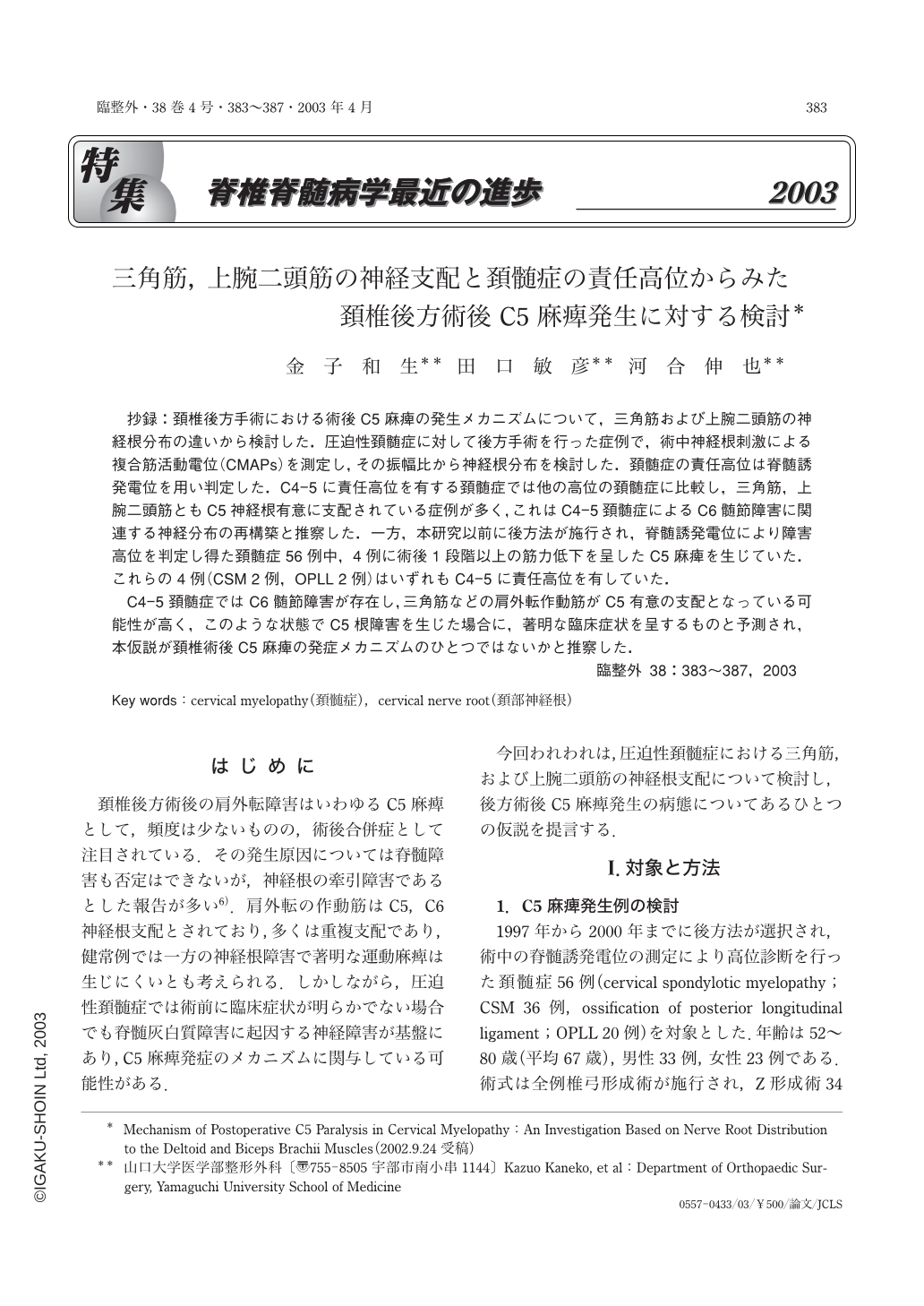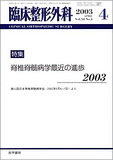Japanese
English
- 有料閲覧
- Abstract 文献概要
- 1ページ目 Look Inside
抄録:頚椎後方手術における術後C5麻痺の発生メカニズムについて,三角筋および上腕二頭筋の神経根分布の違いから検討した.圧迫性頚髄症に対して後方手術を行った症例で,術中神経根刺激による複合筋活動電位(CMAPs)を測定し,その振幅比から神経根分布を検討した.頚髄症の責任高位は脊髄誘発電位を用い判定した.C4-5に責任高位を有する頚髄症では他の高位の頚髄症に比較し,三角筋,上腕二頭筋ともC5神経根有意に支配されている症例が多く,これはC4-5頚髄症によるC6髄節障害に関連する神経分布の再構築と推察した.一方,本研究以前に後方法が施行され,脊髄誘発電位により障害高位を判定し得た頚髄症56例中,4例に術後1段階以上の筋力低下を呈したC5麻痺を生じていた.これらの4例(CSM 2例,OPLL 2例)はいずれもC4-5に責任高位を有していた.
C4-5頚髄症ではC6髄節障害が存在し,三角筋などの肩外転作動筋がC5有意の支配となっている可能性が高く,このような状態でC5根障害を生じた場合に,著明な臨床症状を呈するものと予測され,本仮説が頚椎術後C5麻痺の発症メカニズムのひとつではないかと推察した.
To investigate the mechanism of shoulder girdle weakness after laminoplasty, the distribution of nerve roots to the deltoid and biceps brachii muscle was examined in patients with cervical compressive myelopathy. Compound muscle action potentials (CMAPs) following cervical nerve root stimulation were examined, and the intervertebral levels with symptomatic spinal cord compression were determined on the basis of evoked spinal cord potentials (ESCPs). The results showed that the deltoid and biceps muscles of patients with C4-5myelopathy were predominantly innervated by the C5 root.
In another series, a total of 56 patients who underwent laminoplasty for compressive cervical myelopathy were reviewed. Four of them were identified as having motor-dominant C5 paralysis, and the ESCPs findings indicated that the C4-5 intervertebral level was symptomatic in all four patients (C4-5 in one patient, both C4-5 and C5-6 in 3 patients). In C4-5myelopathy a spinal cord lesion is present at C6 spinal cord, and since there is a strong possibility that the abductor muscles of the shoulder, including the deltoid, are predominantly governed by C5 nerve root, severe clinical manifestations are expected when C5 radiculopathy develops in this situation, and our hypothesis presumably represents one of pathogenetic mechanisms of C5 paralysis after surgery on the cervical spine.

Copyright © 2003, Igaku-Shoin Ltd. All rights reserved.


